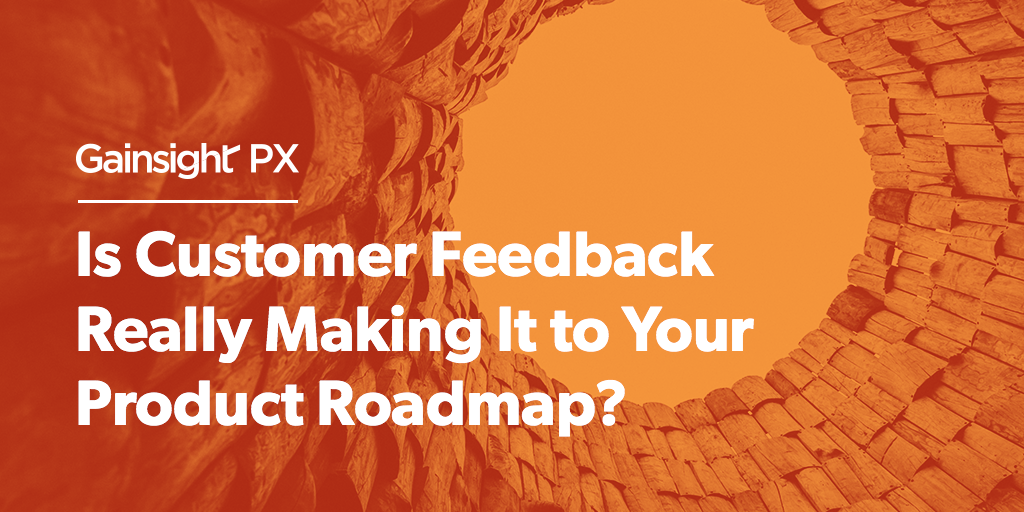As a customer success professional, you talk to your customers every day and gather a ton of feedback straight from the frontlines.
This is real-time, super-rich data. It comes directly from the people who use your product—it’s gold! But … what happens to it?
What’s really happening to product feedback?
I dug into this burning question with customer success (CS) leaders at Pulse 2019. Pulse is an amazing forum for learning and sharing CS and product management best practices—we knew it was the ideal place for onsite, in-person research.

The purpose of this Eigenworks study, done in partnership with Gainsight, is to discover better ways to communicate customer feedback between product and customer success teams.
So I conducted 14 conversations with customer success professionals, one by one, at a table in the busy Pulse exposition hall. I asked interviewees to play out this scenario:
“A customer comes to you with some constructive, thoughtful feedback for how your product can be improved. What happens? Take me through the process.”
The conversations were energetic—some people even called them therapeutic! It didn’t take long before a clear theme emerged. I heard things like:
“Right now it seems like everything goes into Product and nothing comes out.”
“There’s no follow-up process. It’s like you submit those requests and they go into an abyss.”
“How do you start to effect change without getting overwhelmed by the enormity of this problem?”
In short, customer feedback seems to vanish into a black hole, they told me. If you’re in customer success and relate to this sense of frustration, you’re not alone.
I want to be clear that this study is a work in progress. I encourage you to watch this Gainsight webinar to discover our findings and dive deeper into the ones I discuss in this article.
Study Findings: The Customer Feedback Black Hole
The Core Feedback Loop
Product ships out, customers respond with ideas and suggestions, and CS collects feedback and passes it back to Product. If this loop is working well, this should be a virtuous and impactful relationship. But there’s a common feeling that it plays out in a black hole.

Pressures on the Core Feedback Loop
Failed commitments: There will always be changes in priorities, meaning commitments that were communicated externally need to be clawed back.
Disruptive Changes: A re-platforming, for example, requires CS to be the face of a challenging transition for customers.
Requests from “Whales”: Big customers may get their requests fast-tracked by Product, which adds friction.

Failure Points
As feedback travels the Core Loop, it can come into contact with a variety of failure points:
- Feedback can be superficial and hard for Product to use.
- Expectations may not be set properly for customers around when they will hear back about their request.
- Feedback can be scattered into customer forums, CS spreadsheets, etc.
- CS has a perception that product decision-making goes on behind closed doors.
- Requests can languish with no resolution.
- There’s a sense of cultural disconnect between the two organizations.
By the end of every conversation, nearly every person said to me: “So what are other people doing? Who’s got this figured out?”
So let’s take a look at how we can turn those red X’s into green checkmarks.
Fixing the Feedback Loop and Creating Impact
Improving the feedback loop between CS and Product doesn’t have to mean introducing a new software tool. It’s more about establishing systems—like communication channels and protocols —to help these two groups work together effectively. If software helps, great, but it’s not essential.
So, how can you build a better system?

- Dig Deeper: CS can explore feature requests more thoroughly, to uncover the underlying problem and get feedback that’s more useful for Product. For example, one person said they’ve started asking customers what outcome they want to accomplish through a new feature.
- Set Expectations: Help customers understand how long their requests might sit in the queue.
- Simplify Communication: Create easy-to-use feedback channels between CS and Product.
- Make Decision-Making Visible: Product can offer transparency into decisions and factors driving them.
- Be Clear: Deliver a clear “no” to customers when necessary.
- Follow Up: Reach out and notify customers when their feature request is delivered, and thank them for their input.
CS and Product are really just getting started on their relationship, and it’s clear that these two teams can have an incredible impact when they work together closely and well.
Check out our webinar with Eigenworks where we dig into ways that we can bridge the gap between CS and Product.


